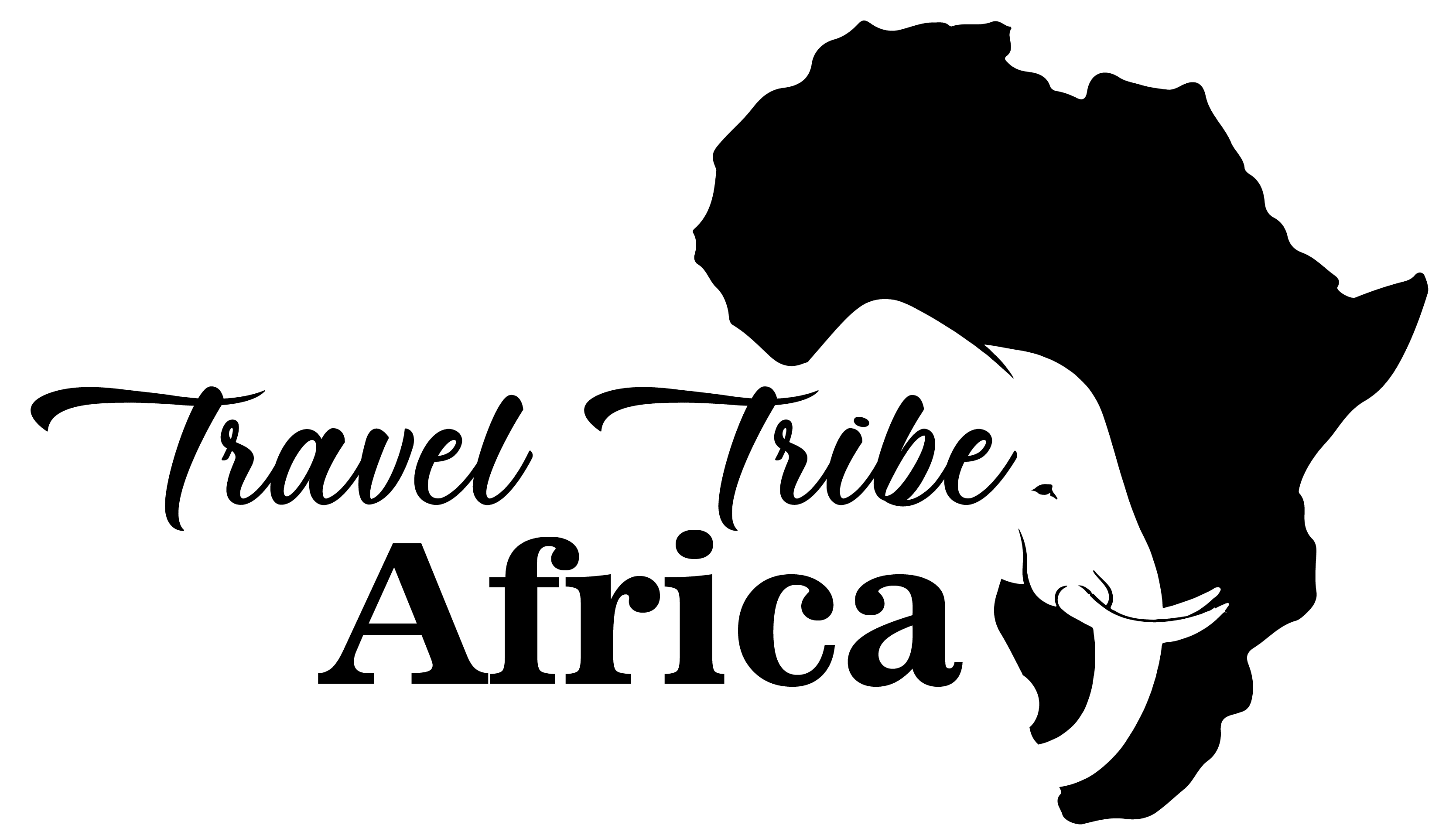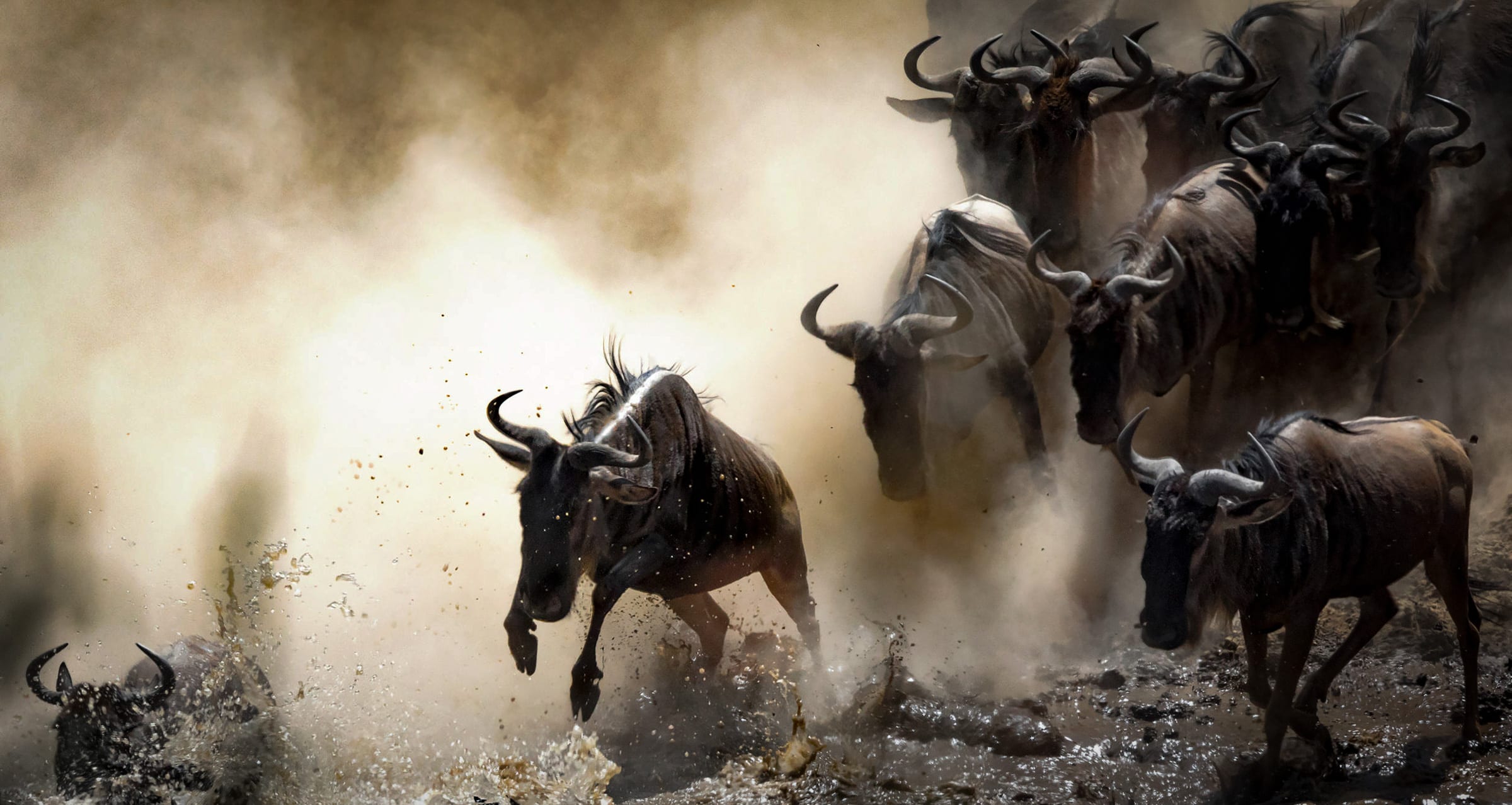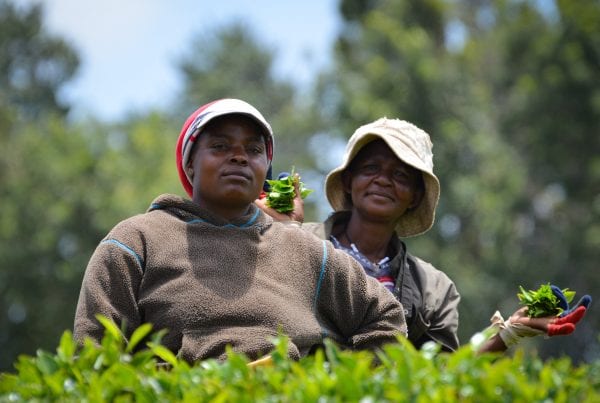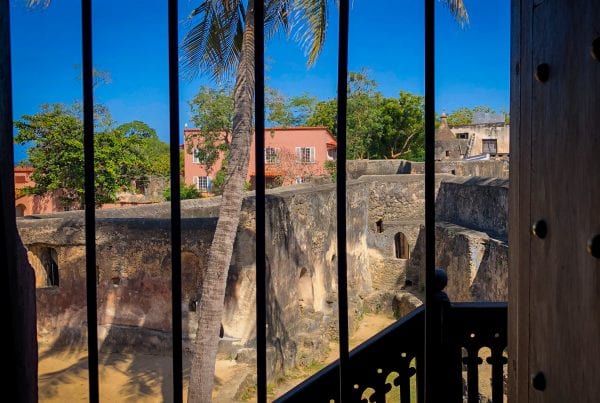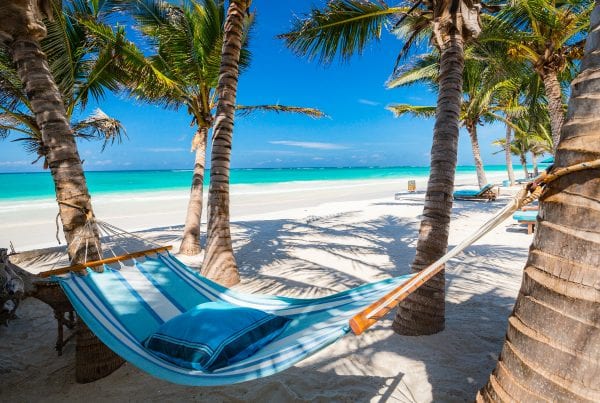This post is part of a short mini-series of factual articles about Kenya. So far, I have written 14 interesting facts and about the deep and rich history of Kenya.
Now, I want to delve a little deeper into Kenya’s world-renowned natural beauty and stunning wildlife. The original home of safari (meaning ‘journey’ in Kiswahili), Kenya has mixed bio-diverse landscapes which are home to over 7,000 species of plants and trees and 25,000 species of animals.
As nature and wildlife is a personal passion of mine, I’ve tried to capture a cross-section of interesting factual information. But, with so much that I could possibly write, it’s been hard to decide on what to include and what to leave out.
I’m sure I’ll end up writing many more posts that explore some of these areas a little deeper in the future. So, for now, here’s a little taster of Kenya’s natural wonders!
1) Kenya has a range of environments and ecosystems
Kenya has a diverse range of environments and ecosystems, ranging from deserts, grassland savannahs, swamps, mountains, forests and tropical beaches.
The north of Kenya is arid and semi-arid desert, which comprises about three fifths of the country. This area is generally more remote and off the main tourist path, although it can be a popular choice for the real adventure-seekers.
The central highlands include Mount Kenya, the Aberdare mountains and surrounding landscapes. The country’s capital, Nairobi, sits on a 1,500 metre plateau. Nairobi was chosen in colonial times, largely because of the cooler temperatures, river connectivity and fertile lands surrounding it.
Beyond the steep escarpment a short distance outside of Nairobi, lies the Great Rift Valley. This valley leads west through grassy savannah, towards Lake Victoria.
South of Nairobi, there are more plains of grassland and dry, thorny scrub before reaching the soft white, palm-fringed sandy beaches of Mombasa and the Swahili coast.
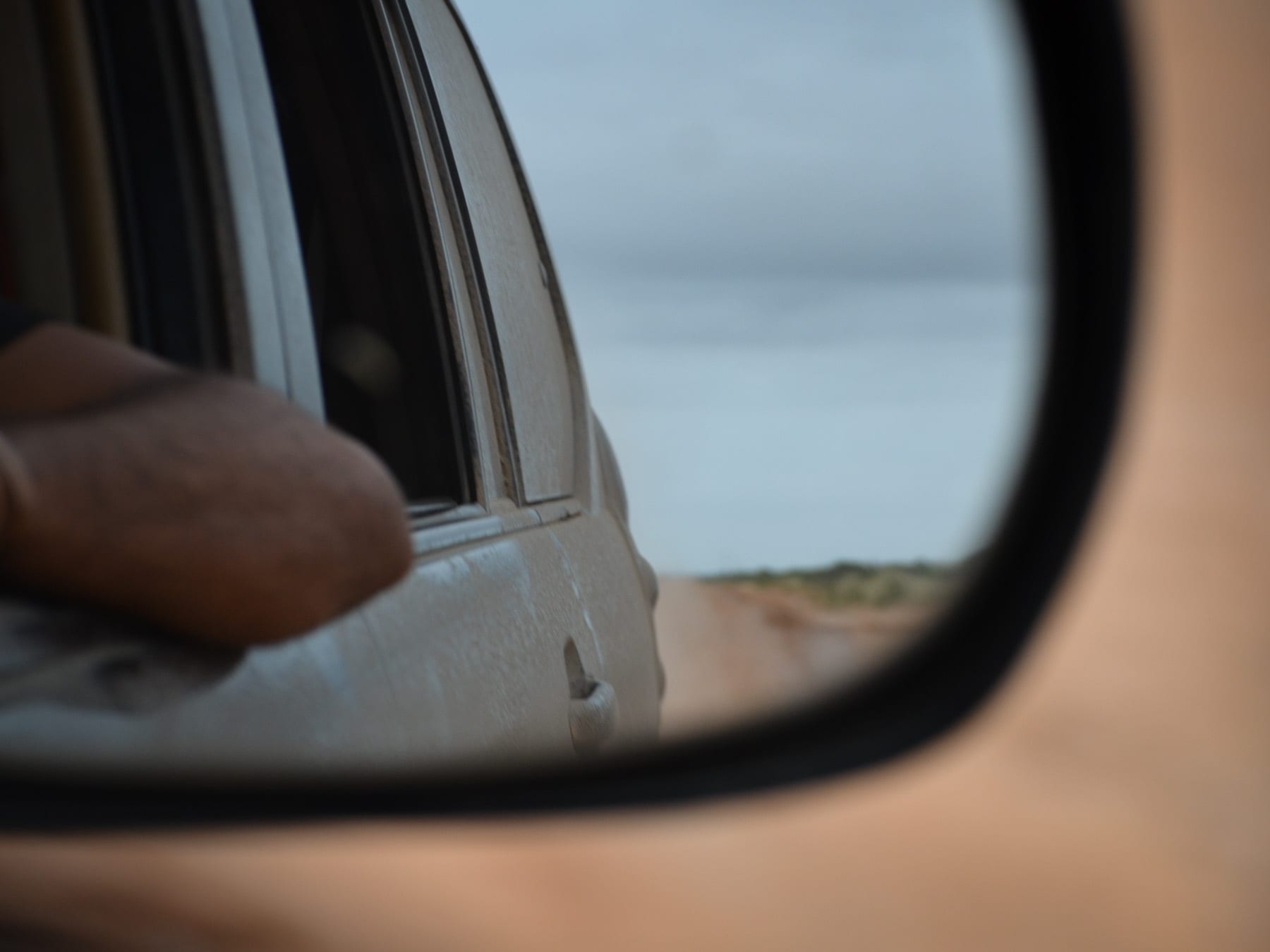
Northern Kenya is largely arid and semi-arid desert, more remote and off the normal tourist routes. Image copyright Ayaan Chitty.
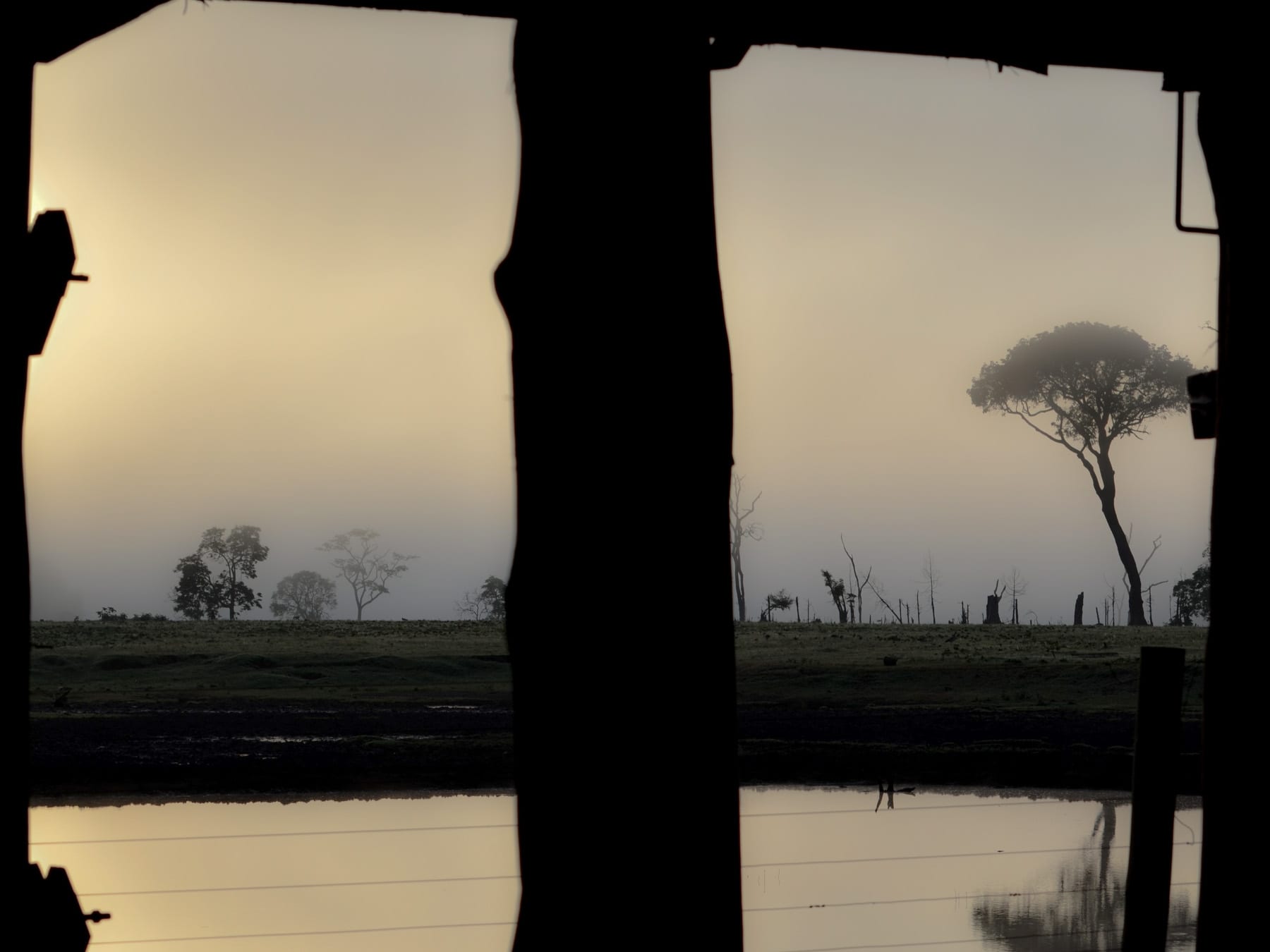
The central highlands are generally cooler and have lush green vegetation. Image copyright Ayaan Chitty.
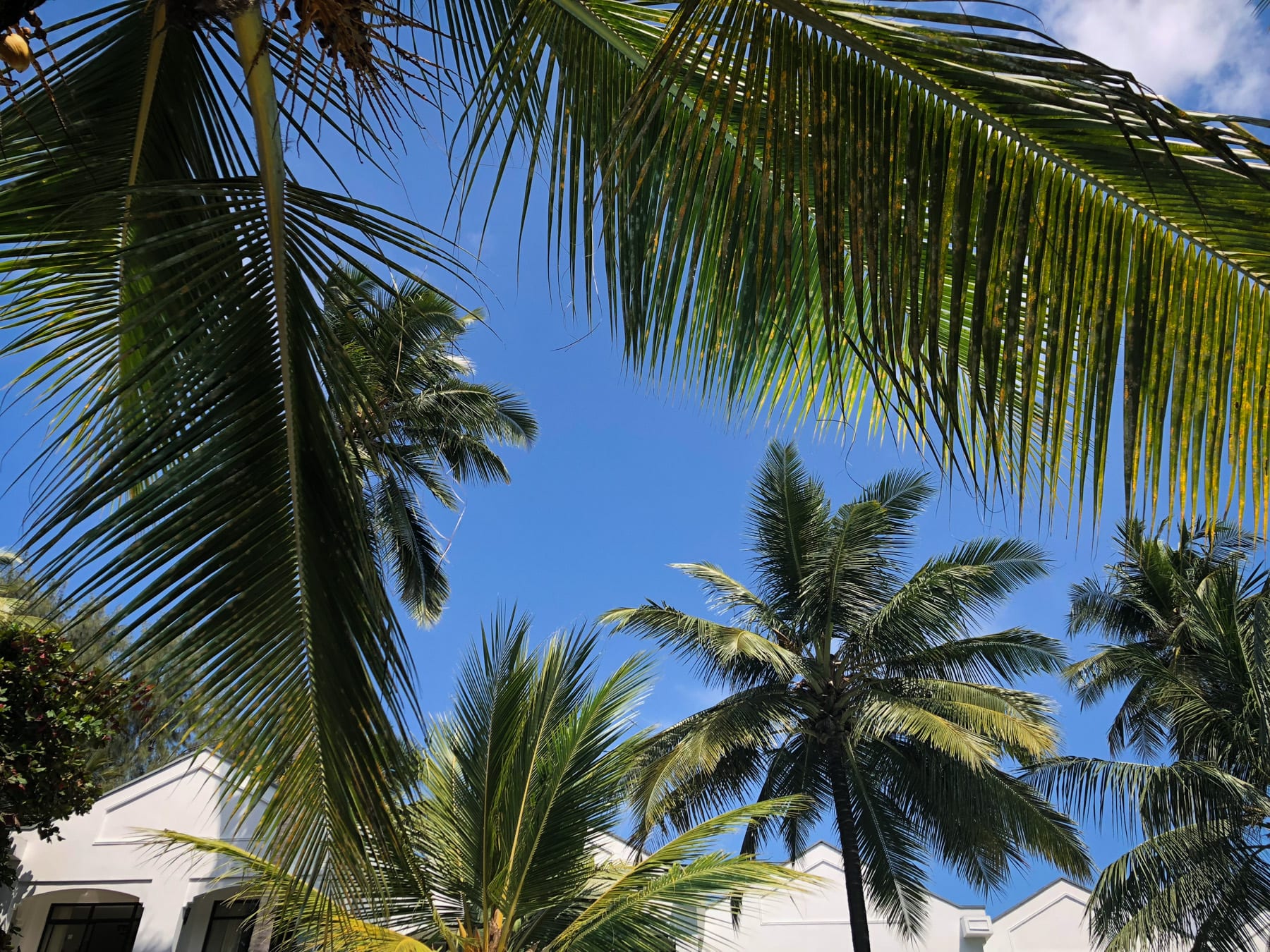
The coast plays host to tropical beaches and countless palm trees. Image copyright Ayaan Chitty.
2) Kenya features the two highest mountains in Africa
Kenya is named after Mount Kenya (5,199 metres / 17,057 feet), which is the tallest mountain in the country and the second highest mountain in Africa, after Mount Kilimanjaro in Tanzania. According to legend from many tribes, Mount Kenya is believed to be God’s resting place.
It is also said that Kilimanjaro used to belong to Kenya but Queen Victoria, then the monarch of the United Kingdom, gave it to her grandson, Kaiser Wilhelm II of Germany, as a birthday gift in 1886.
Kilimanjaro is physically located 20 kilometres inside the Tanzanian border. So, to climb Africa’s highest peak, you will need to visit Tanzania. However, one of the best – and most iconic views of this magnificent mountain is only available from Amboseli National Park in Kenya. There has been a good deal of controversy between both countries’ tourism industries. But, in my view, the beauty of this majestic mountain can be appreciated from two different perspectives, from both Tanzania and Kenya.
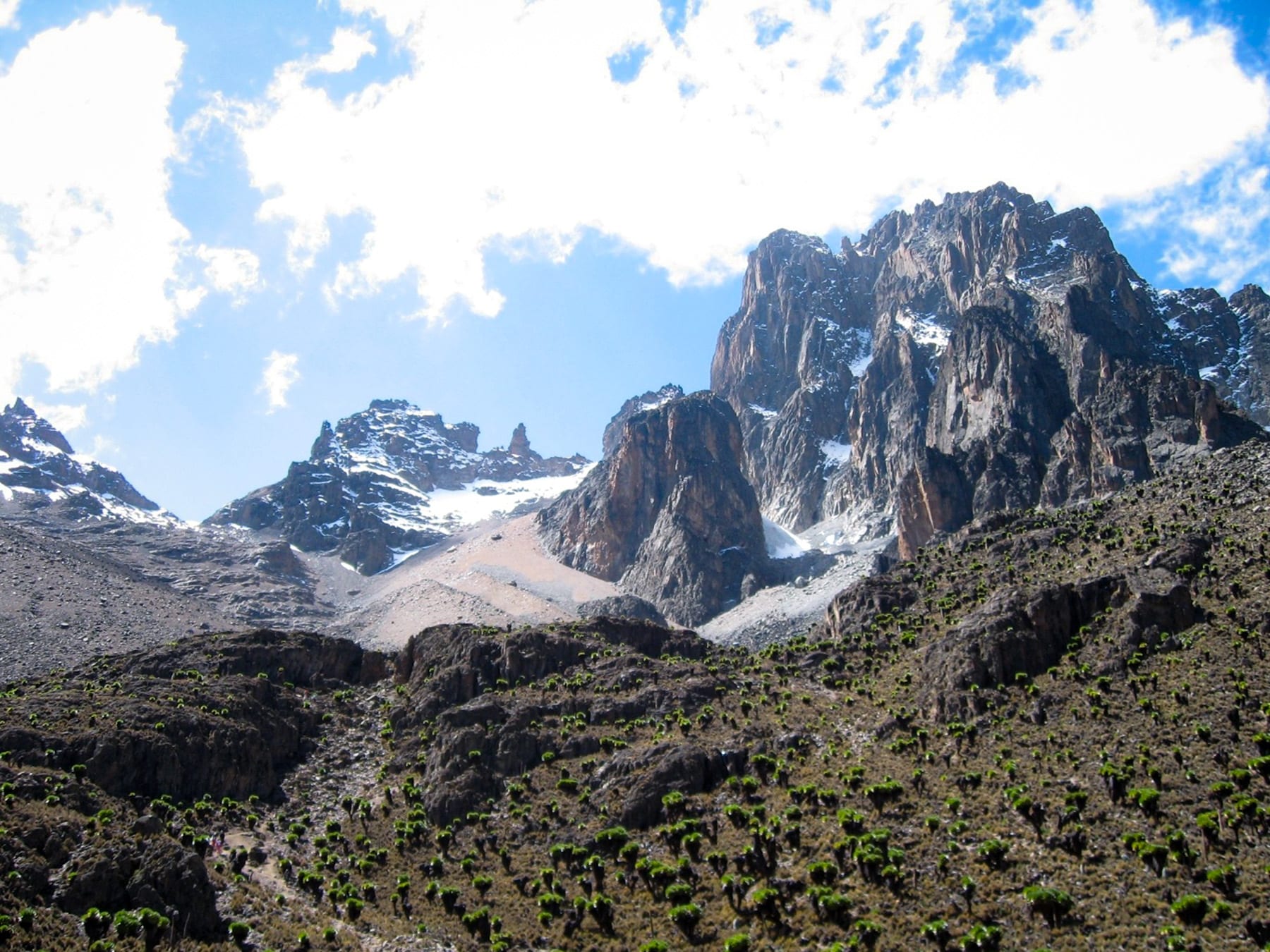
Mount Kenya National Park. Image by Geographical Association.
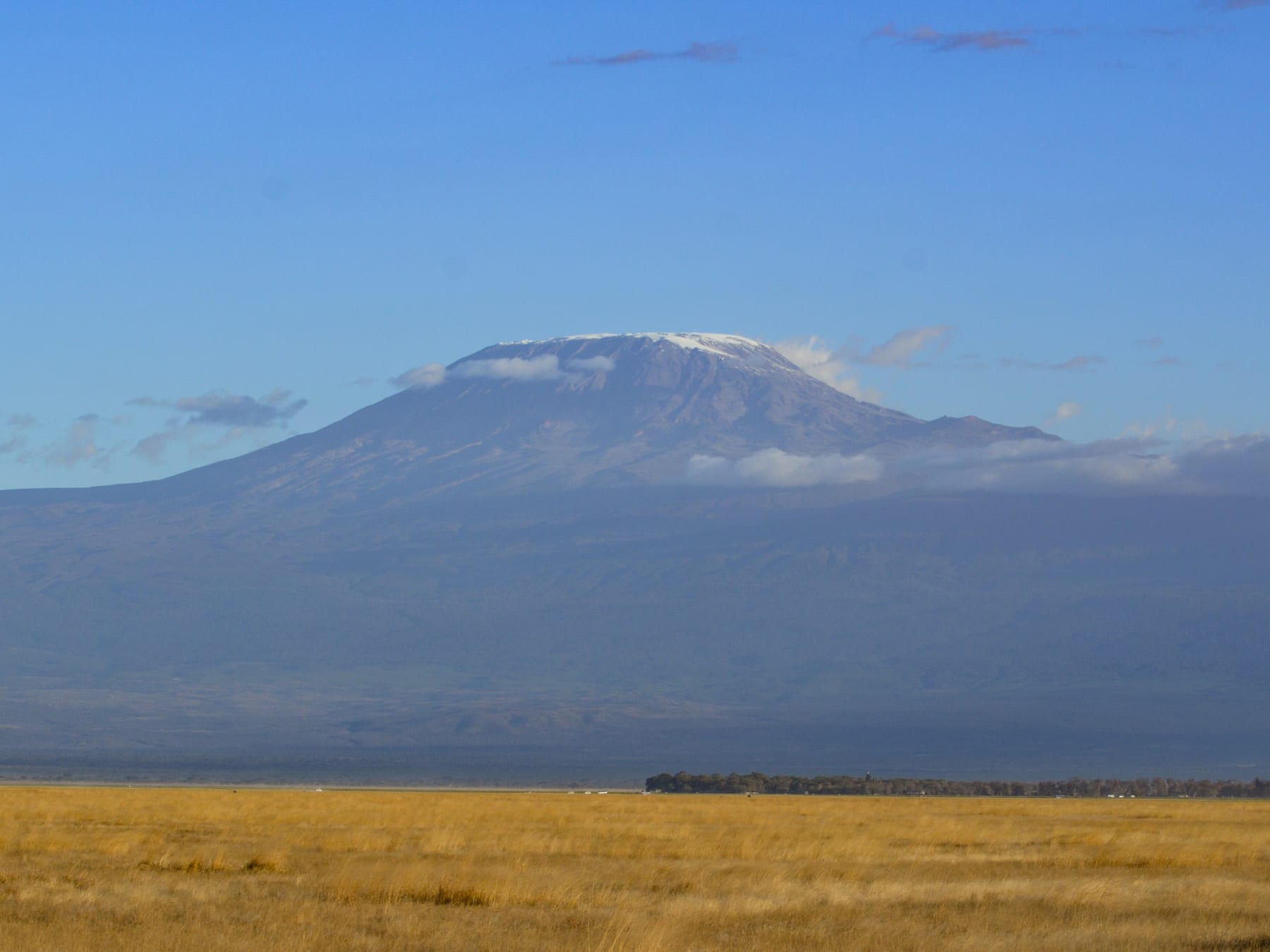
Mount Kilimanjaro, viewed from Amboseli National Park, Kenya. Image copyright Ayaan Chitty.
3) The legendary Great Rift Valley is where the earth split
The Great Rift Valley was formed by a ‘rifting’ of the earth’s crust between 10 – 20 million years ago. The Great Rift Valley actually stretches 5,400 miles (8,700 kilometres) from Lebanon to Mozambique, neatly splitting Kenya from Ethiopia in the North to Tanzania in the south. The valley ranges from 19 miles to 93 miles across. It is also an important archaeological area of special interest, with many early remains having been discovered here, some dating back 6.5 million years.
In the north of Kenya, the valley is pretty much arid desert but as it runs south, steep escarpments rising to around 600 – 900 metres (2,000 – 3,000 feet) appear. The region is known for its volcanic activity and there are numerous extinct and dormant volcanoes across the valley.
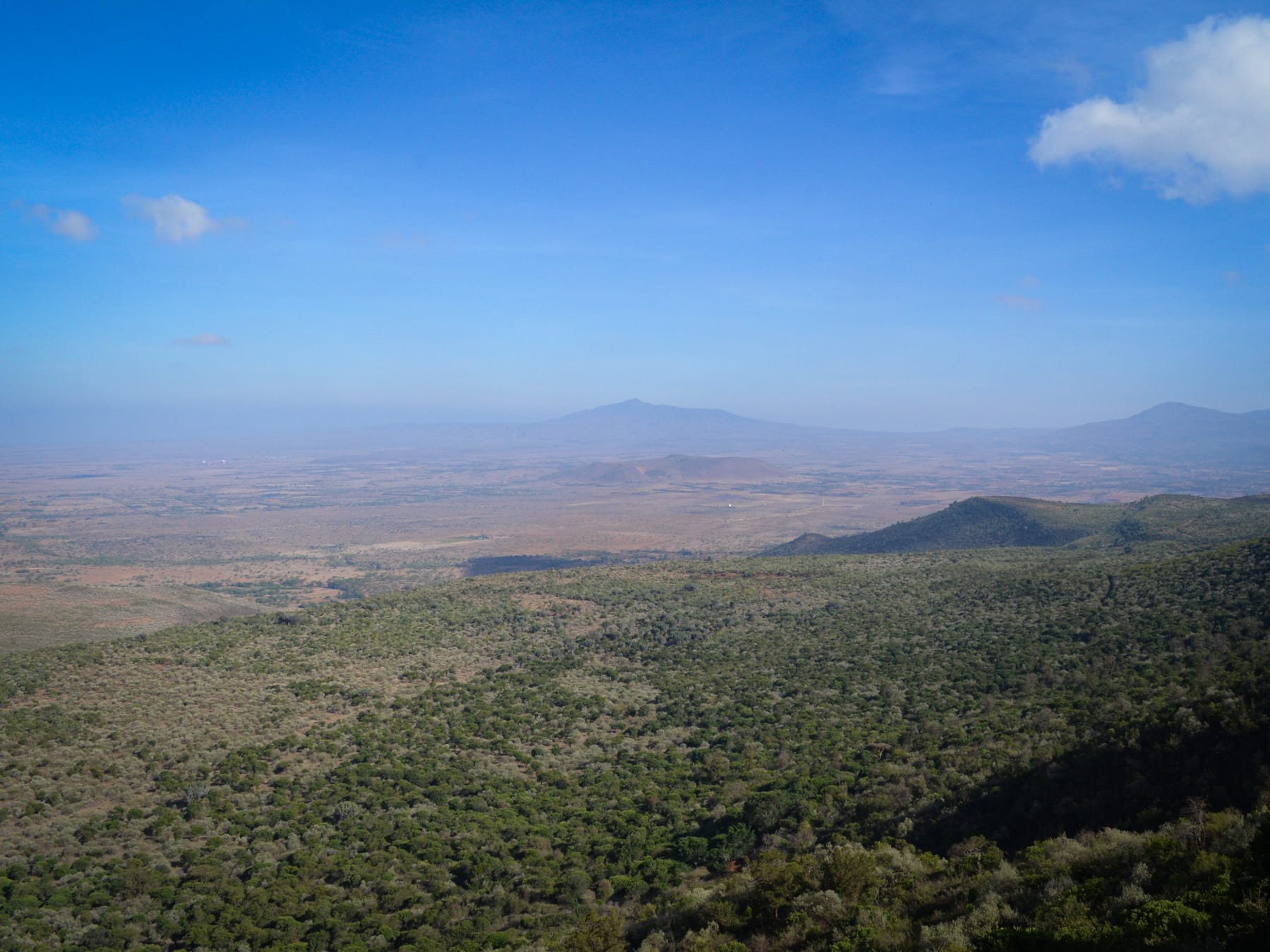
A view across the vast Great Rift Valley. Image copyright Ayaan Chitty.
Earth from Space: Great Rift Valley, Kenya. Video by European Space Agency.
4) Lake Victoria is Africa’s largest lake and spans three countries
Kenya shares Lake Victoria, the world’s second largest freshwater lake, with Tanzania and Uganda. Also known as Victoria Nyanza, Africa’s largest lake is second only in size to Lake Superior in North America. The 26,828 square miles (69,484 square km) can be clearly seen from space. The lake’s coastline is around 2,000 miles long and there are approximately 1,000 islands contained within this vast body of water. The sheer size of the lake can be best appreciated by looking at satellite images from space.
Lake Victoria, the source of the famous Nile river (through a series of feeder river systems) was discovered by John Hanning Speke in 1858. The British explorer dedicated the name of the lake to Queen Victoria, who reigned as Monarch of the United Kingdom between 1837 and 1901.
The lake is around 400,000 years old and has been known to dry up several times throughout its life. Scientists believe the relatively shallow waters (averaging 25 metres) could be one explanation for the periodic drying of the lake. It is also feared that due to global warming, the lake may experience another dry spell within the next 500 years.
There’s a variety of wildlife that inhibit the lake and surrounding area, such as Hippopotamus, Bohor Reedbuck, African Clawless Otter, Marsh Mongoose, Cane Rats, Giant Otter Shrew, Defassa Waterbuck, Spotted-Necked Otter and the king of the lake – Nile Crocodiles. While over 500 species of fish are known to have lived in the lake, in recent years, populations have declined, with many now believed to be extinct. Most fish today are Cichlids, although, other non-native fish species include African Tetras, Climbing Gourami, Marbled Lungfish, Spiny Eel and Loach Catfish.
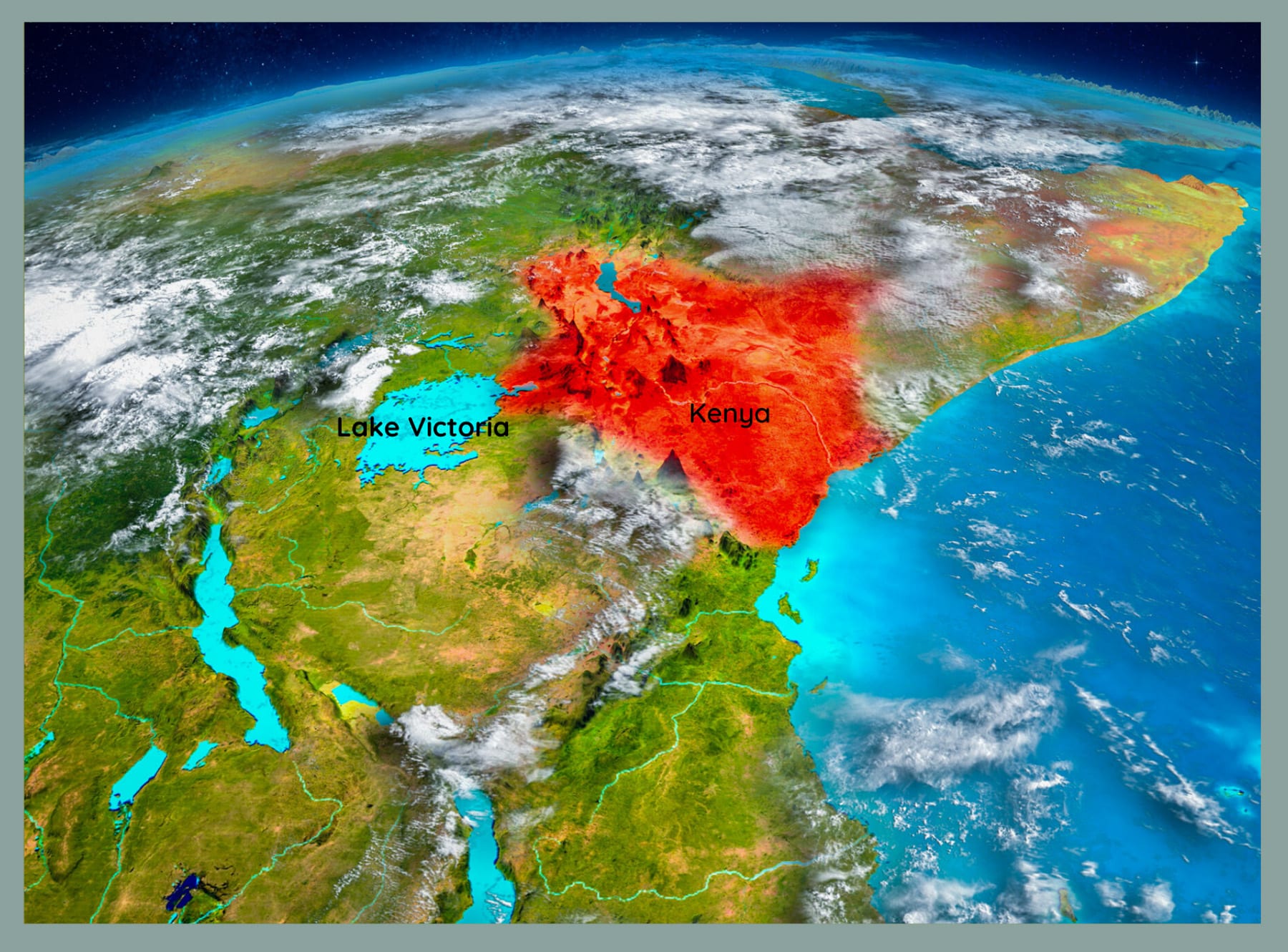
The size of Lake Victoria can be appreciated by viewing it from space. Computer model image by Tomas Griger (annotations by Ayaan Chitty).
5) Kenya’s coast is over 300 miles long
The coastline of Kenya measures 333 miles (536 kilometres) and boasts some of the best beaches in the world. A visit to the coast can be as relaxing or adventurous as you desire!
The coastal areas of Kenya are rich in history, having been the centre of many conquests from the 8th century, through to the 19th century when the British arrived. It was only then, that Kenya’s interior was really opened up, with the construction of roads, railways and moving the country’s capital to Nairobi in 1905.
The coastline is separated by Mombasa island into the north coast and south coast. The north coast is home to Malindi, Watamu, Gedi ruins, Arabuko Sokoke Forest Reserve and Lamu island. The area is great for soaking up the Swahili culture, enjoying the beaches, snorkelling, diving, walking and bird watching. A brief note, if you are planning a trip to the northern coastline; check FCO travel advice (or equivalent) as some Governments will advise against travel to certain areas, such as Lamu and Garissa counties (although the popular beach resorts along the Kilifi county coastline are usually not affected).
The south coast boasts the popular Diani beach – recognised as Africa’s best beach destination, according to the World Travel Awards. The area also has many glorious beaches, including Nyali, Bamburi, Tiwi, Msambweni and Wasini island. Shimba Hills National Reserve is a protected coastal forest, approximately 12 miles inland from the Diani / Tiwi area. The forest hosts the last stronghold of Sable Antelope, as well as leopard, giraffe, zebra, warthog, monkeys, buffalo and elephant.
Epic drone footage of the beautiful Diani beach. Video by Roman Čimbora.
6) Kenya has more than 50 parks and reserves
To preserve the wildlife and combat illegal poaching (which still occurs in some areas), the Government has set up more than 50 parks and reserves (and many more private conservancies), covering about 10 percent of the country. Nairobi has its own National Park, making it the only one in the world that borders a capital city.
The largest and one of the oldest national parks in the country is Tsavo in the south of Kenya. At 13,747 square kilometres, Tsavo East and Tsavo West parks combined cover an area larger than the state of Connecticut (12,997 sq km) in the United States of America.
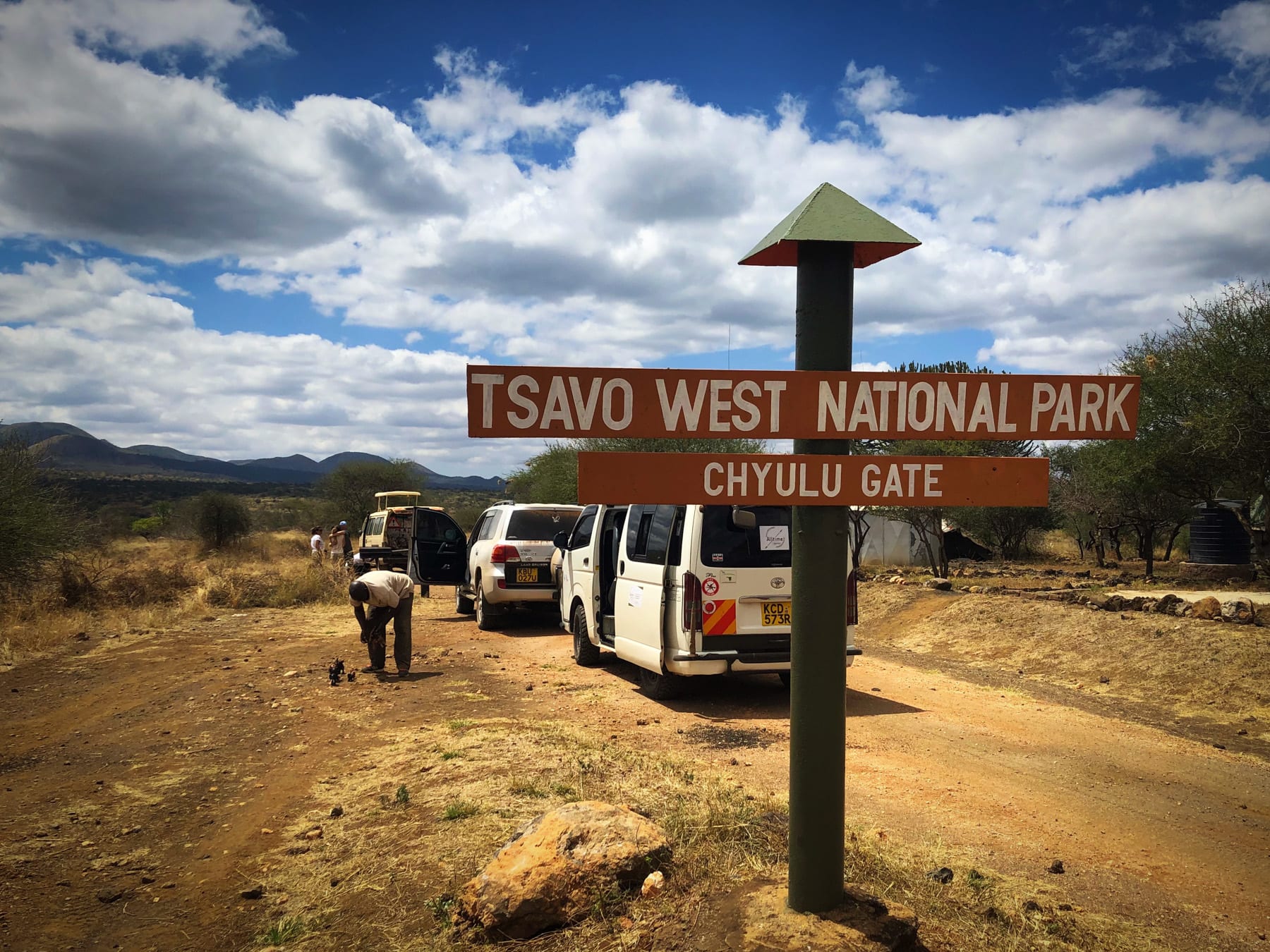
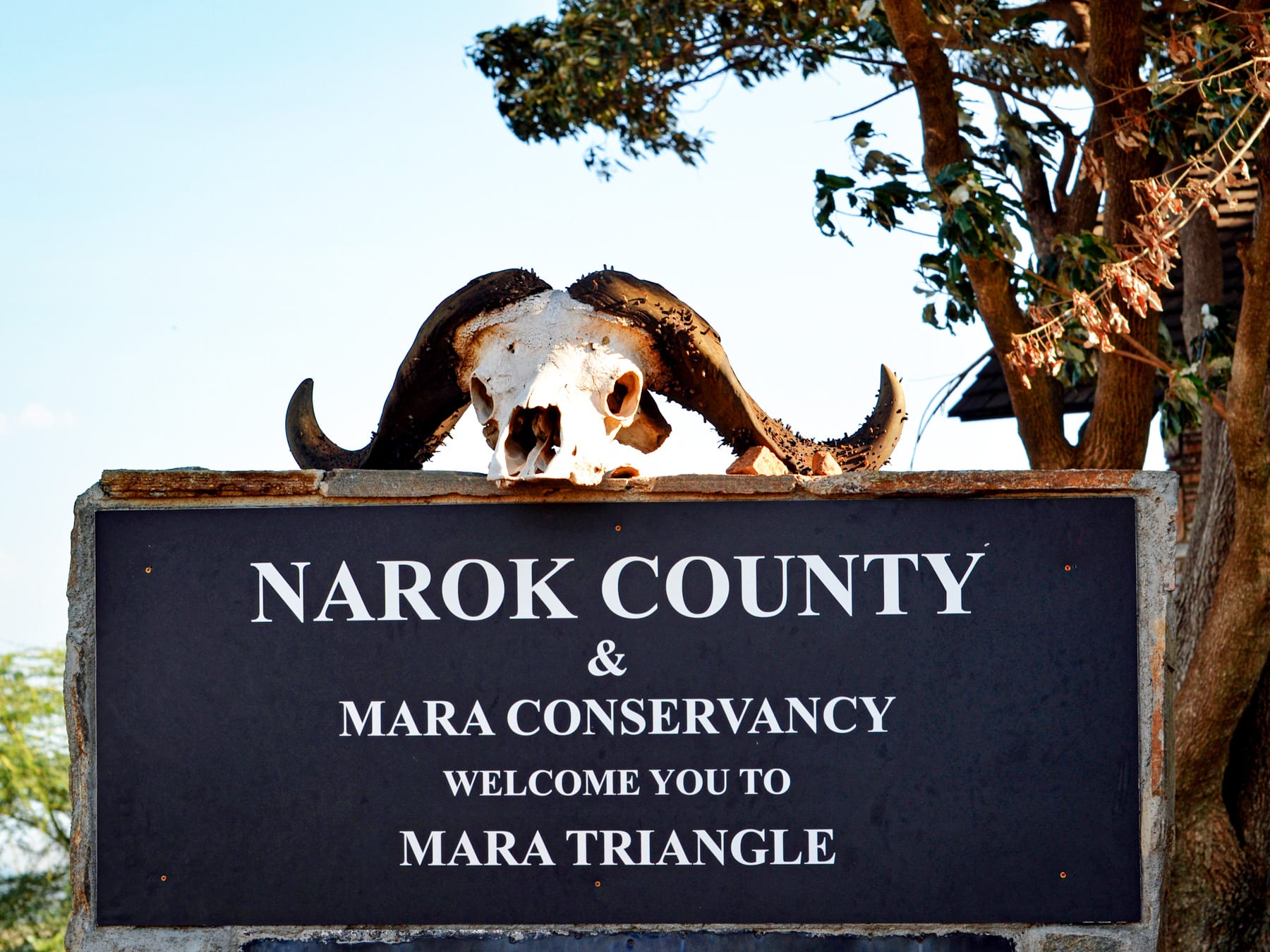
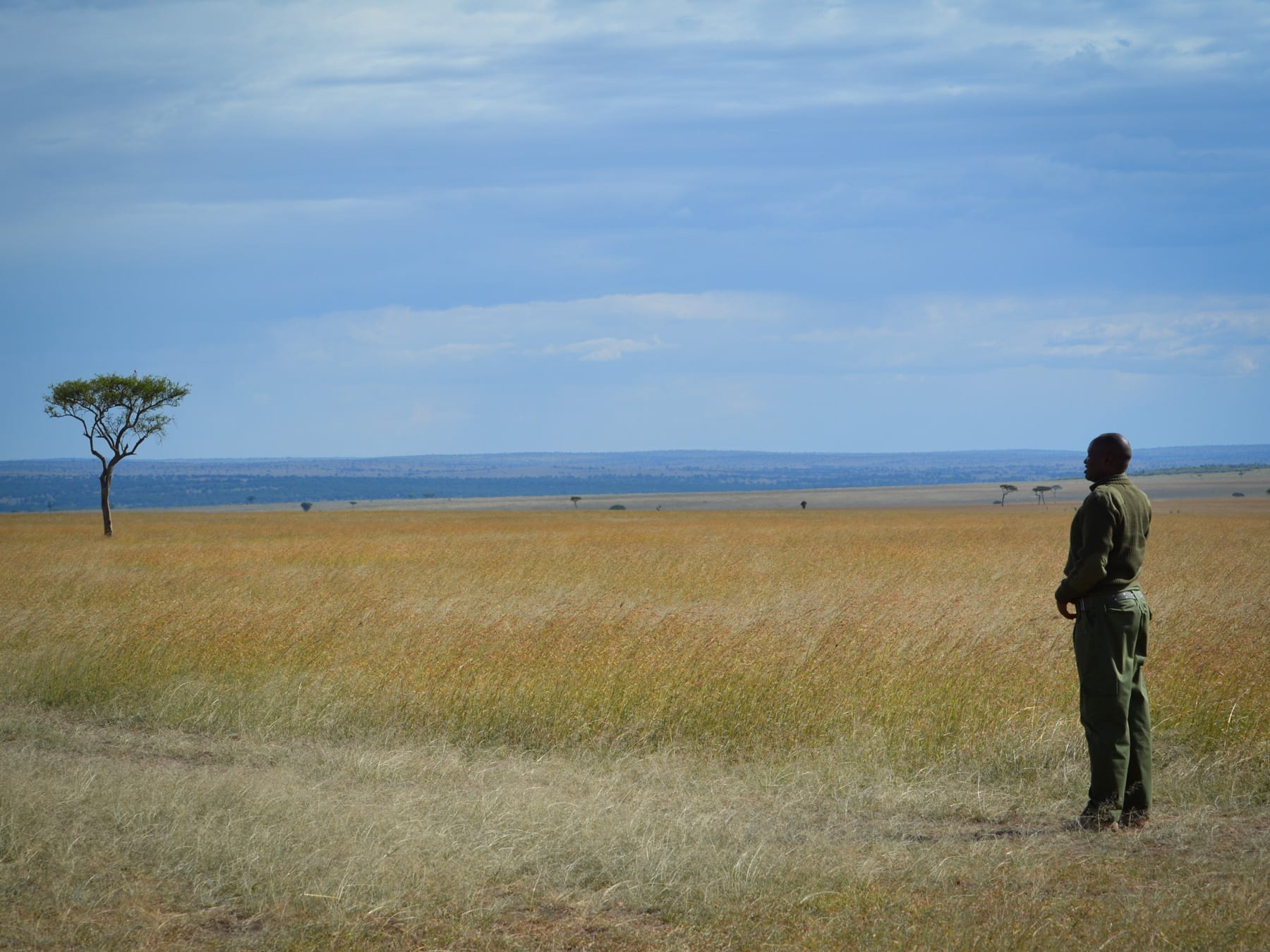
Kenya has more than 50 parks and reserves (and many more private conservancies), covering about 10 percent of the country. Images copyright Ayaan Chitty.
7) The Maasai Mara plays host to the greatest show on earth!
Each year, the Maasai Mara Reserve, probably Kenya’s most famous reserve, plays host to what many describe as the greatest show on earth – the migration of wildebeest through the Serengeti/Mara ecosystem. Starting around March each year, an estimated 1.5 million wildebeest, along with 200,000 zebra and antelope begin to make their way north from the Ngongorogoro Conservation Area in Tanzania towards Kenya. This is just the start of the 1,800 mile trek through the Serengeti, across the border into the Maasai Mara and back again.
Between July – September, the animals cross the treacherous Mara River into Kenya and the lush Maasai Mara grasslands. However, this is a notoriously dangerous part of their journey, due to the crocodiles laying in wait. Other predators, such as lion, cheetah and leopard also line the banks, waiting for an easy meal. Along with disease, starvation, thirst and fatigue, this epic journey claims the lives of an estimated 250,000 animals each year.
The event is one of the flagship events of the year in the animal kingdom, attracting many visitors, wildlife enthusiasts, photographers and film makers from around the world.
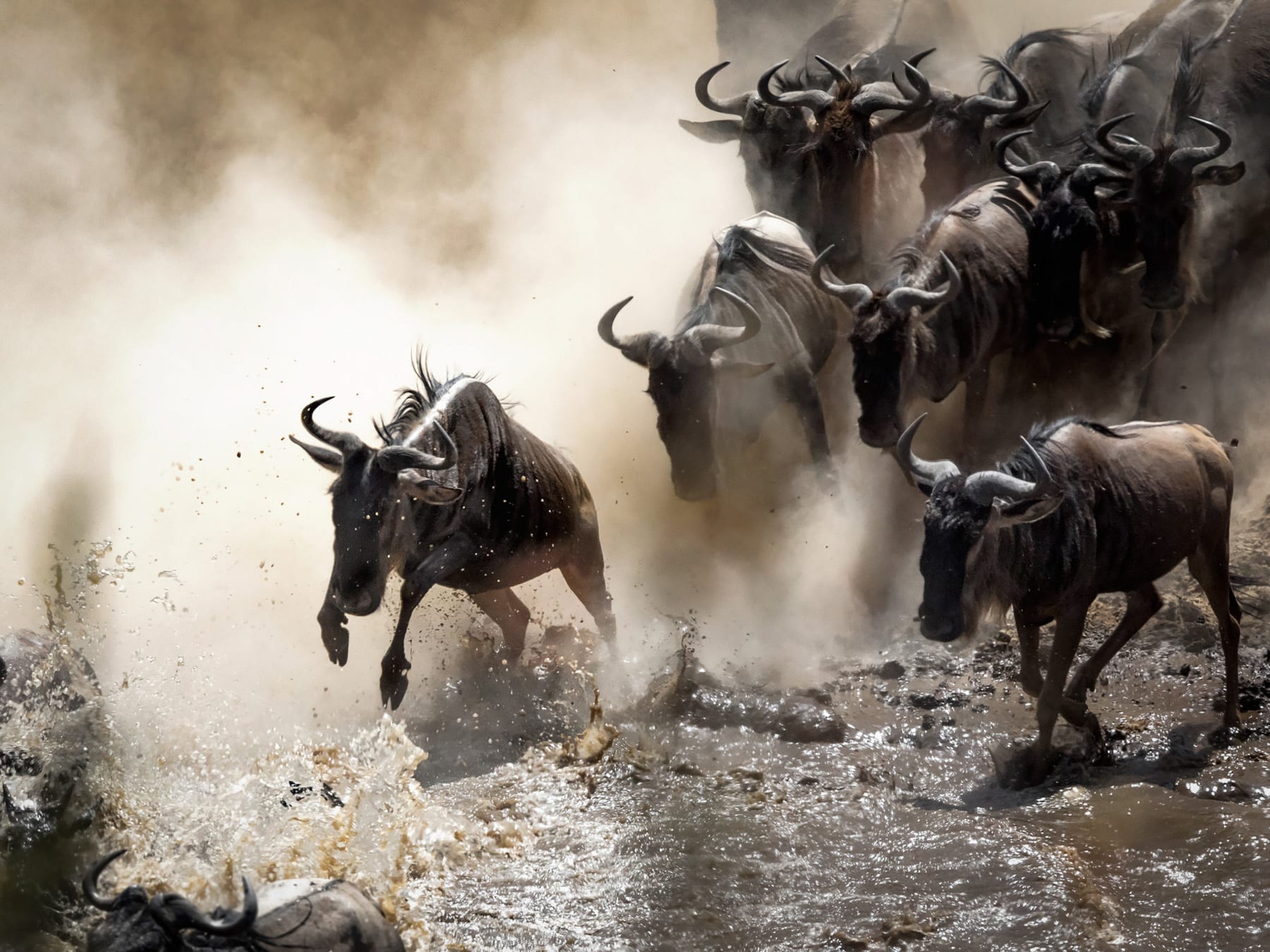
Wildebeest crossing the Mara River during the annual great migration. Image by Jane Rix, 123rf.com
8) It’s the best place on earth to see the big five
Kenya is the best place in the world to see the big five – a term originally used by colonial game hunters in the late 1800s, used to describe the hardest and most dangerous animals to hunt.
The big five comprises the African lion, African elephant, Cape buffalo, black and white rhino and the African leopard.
These animals are still hunted and are rapidly declining in population, but it’s now due to poaching for monetary gain as opposed to traditional trophy hunting. Rhinos in particular are critically endangered. In 2018, the last male northern white rhino on the planet (named Sudan), sadly died.
However, despite continuous threats, the emphasis of the term ‘big five’ has shifted towards the tourism industry and nature lovers. It’s often considered a travel goal for many who visit Africa to have spotted the big five.
In some reserves, such as the Maasai Mara, it’s possible to see all of the big five in their natural habitat. However, due to the size of the park, you will need some luck behind you! Nairobi National Park even has four out of the big five (it doesn’t have elephants).
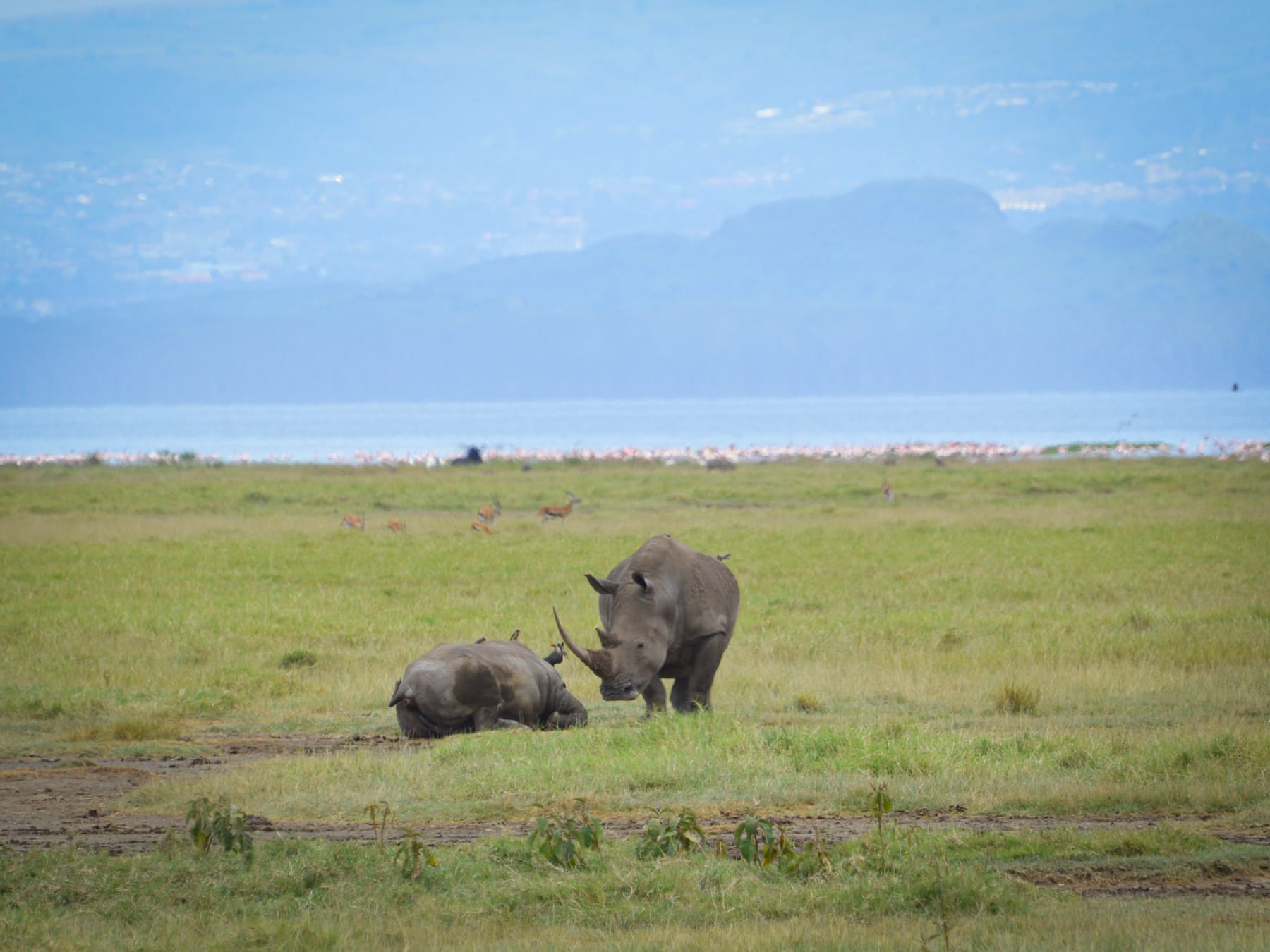
Viewing the big five in the wild is a privilege. We spotted these two rhino at Lake Nakuru. Image copyright Ayaan Chitty.
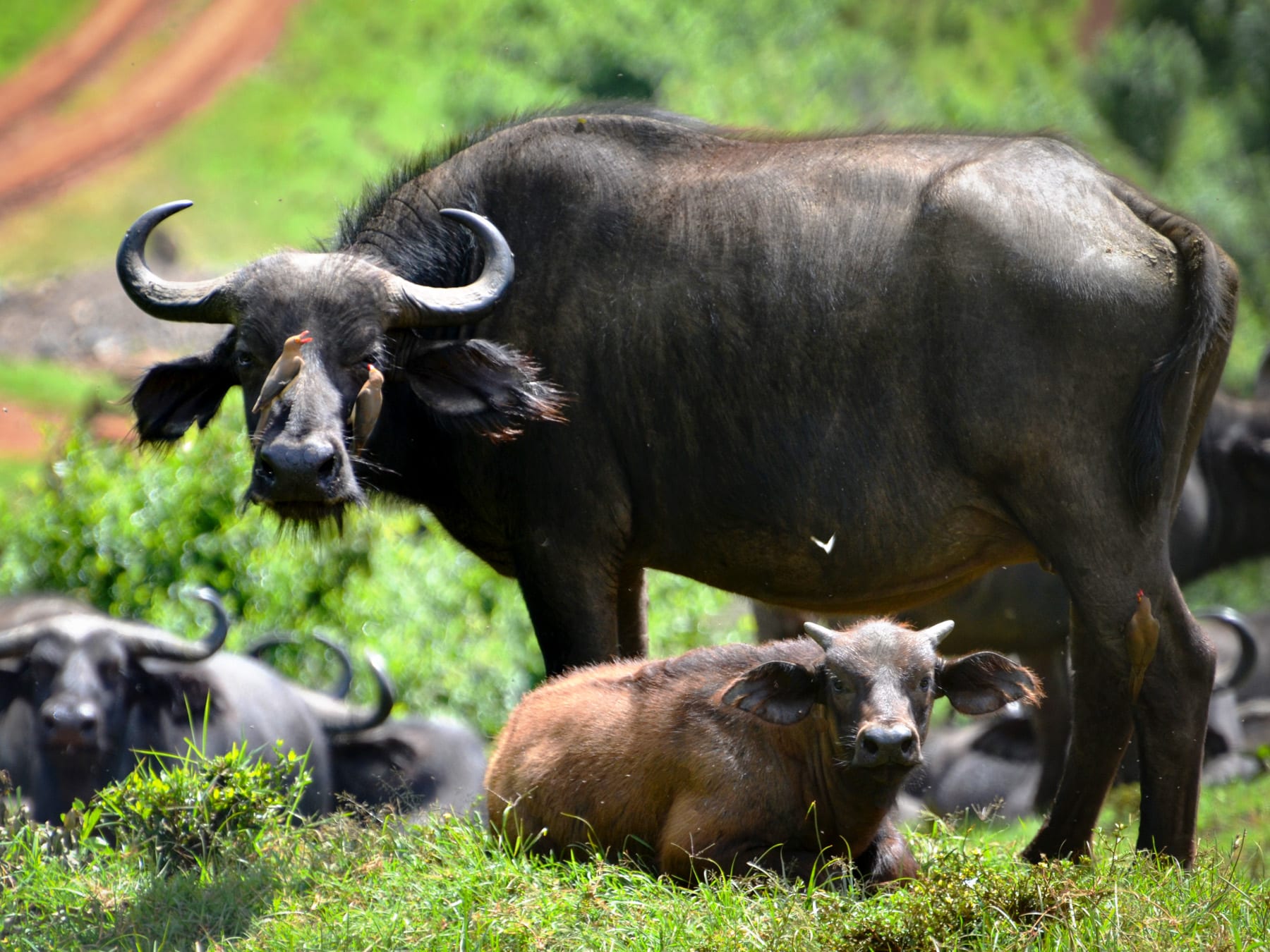
The lush Aberdare forests are a great haven for buffalo. Image copyright Ayaan Chitty.
9) There are many threats to native wildlife
Hunting is illegal in Kenya. However, during colonial times, big game hunting drastically reduced the country’s population of large animals. Further outbreaks of poaching occurred during the 1970 and 1980s, leading to Kenya Wildlife Service (KWS) being formed in 1990. KWS now employs thousands of rangers across the many parks to protect the wildlife and deter illegal activities.
In 2016, Kenya set alight 105 tonnes of elephant ivory and 1.35 tonnes of rhino horn – the remains of some 6,500 elephants and 450 rhinos killed for their tusks and horns. This is a shocking figure, but sadly represents just 5 percent of what currently held in government stockpiles across Africa.
Besides poaching, much of Kenya’s wildlife is under threat from habitat destruction and human-wildlife conflict. Crop raiding, attacks on humans, livestock depredation and damage to property can cause an impact on local communities. Unfortunately, in many cases, their response is to kill the animals involved, causing devastating implications on the wider ecosystem.
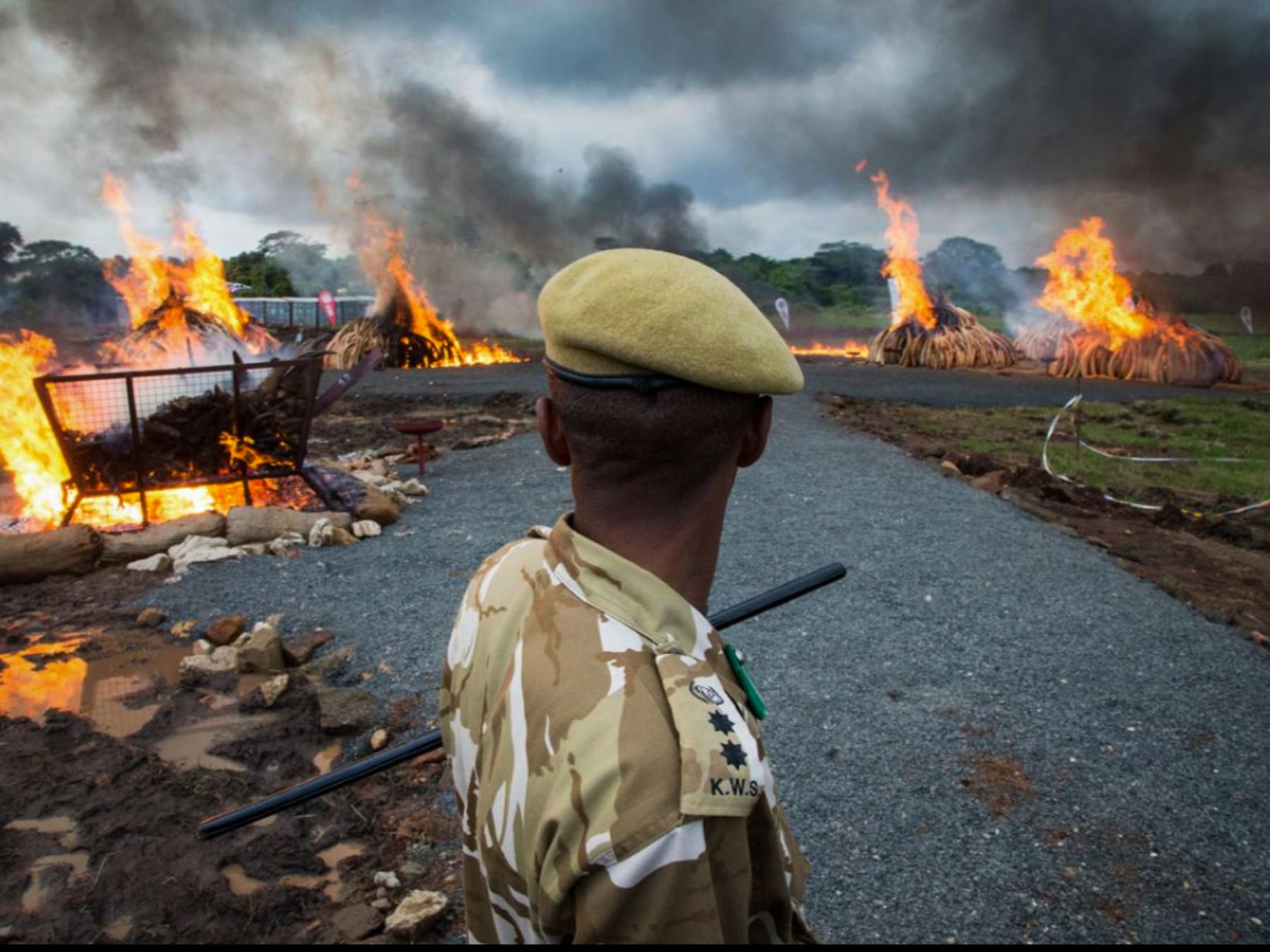
The burning of 105 tonnes of elephant ivory in 2016. Image by Charlie Hamilton James, National Geographic.
10) Kenya is home to the world’s fastest land animal
Kenya is also home to the fastest animal in the world. The cheetah can reach speeds of up to 71 miles per hour (114 kph). Their long tail helps the cheetah to maintain balance as it chases its prey.
Cheetah are known to use trees, termite mounds and (occasionally) even safari vehicles, to survey the layout of the land, look out for predators and scan the savannah to spot hunting opportunities.
According to the Mara Meru Cheetah Project, the global wild cheetah population is estimated as low as 7,500 animals. Kenya is considered to be one of the larger populations in Africa (estimated at 1,500 cheetahs). However, populations have declined by approximately 30% in the last 18 years.
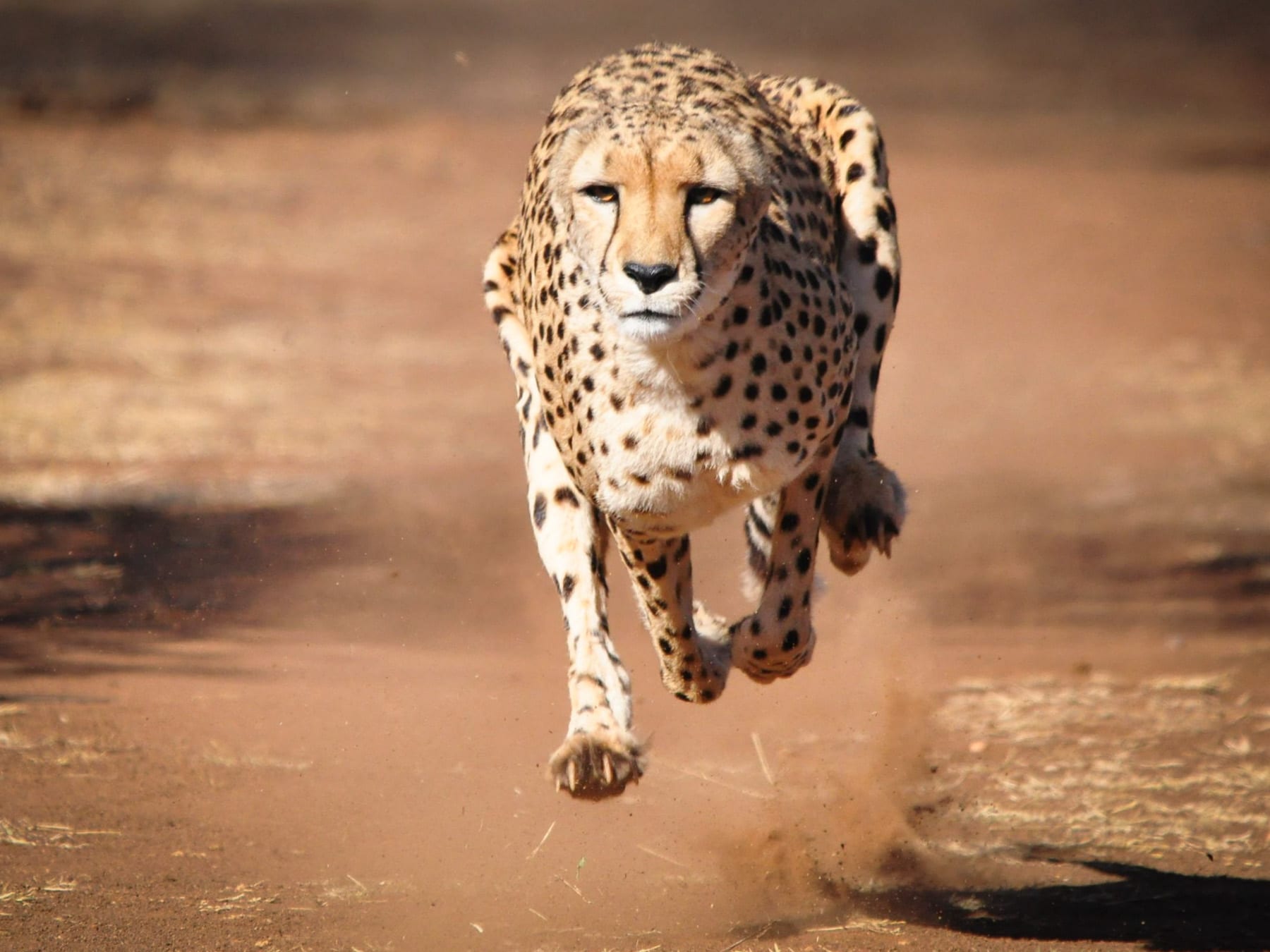
The cheetah can reach speeds of up to to 71 miles per hour. Image by Marcel Brekelmans, 123rf.com
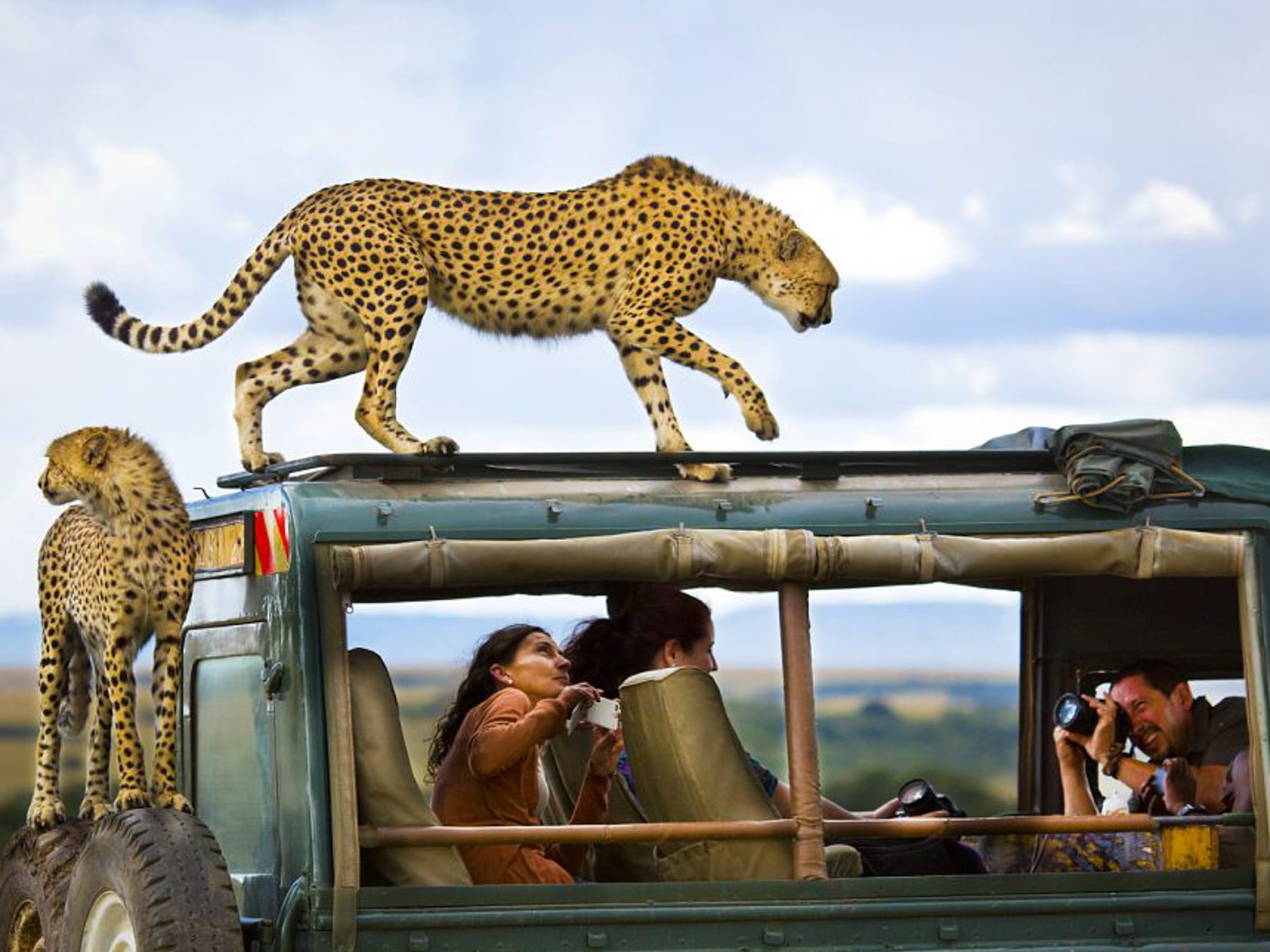
Cheetah can occasionally jump onto safari vehicles to get a good view of the surrounding landscape. Image by Yanai Bonneh, National Geographic Award Winner.
11) The world’s largest fish swims in Kenya’s ocean
Kenya’s coast is a great location to spot the world’s largest fish between October and March each year. Whale sharks can reach in excess of 32 feet long and weigh an average of 20 tonnes. Despite their enormous size, they feed on plankton and small fish, are docile and it is considered an honour to snorkel with them.
Whale sharks are known locally as ‘Papa Shillingi’ – a Swahili name, translating into ‘Shark covered in shillings.’ Local legend says that God gave the angels gold and silver to throw down from heaven onto the shark’s back. Many believe that whale sharks swim close to the surface, catching the sun on their backs, as a way to say thank you to their creator.
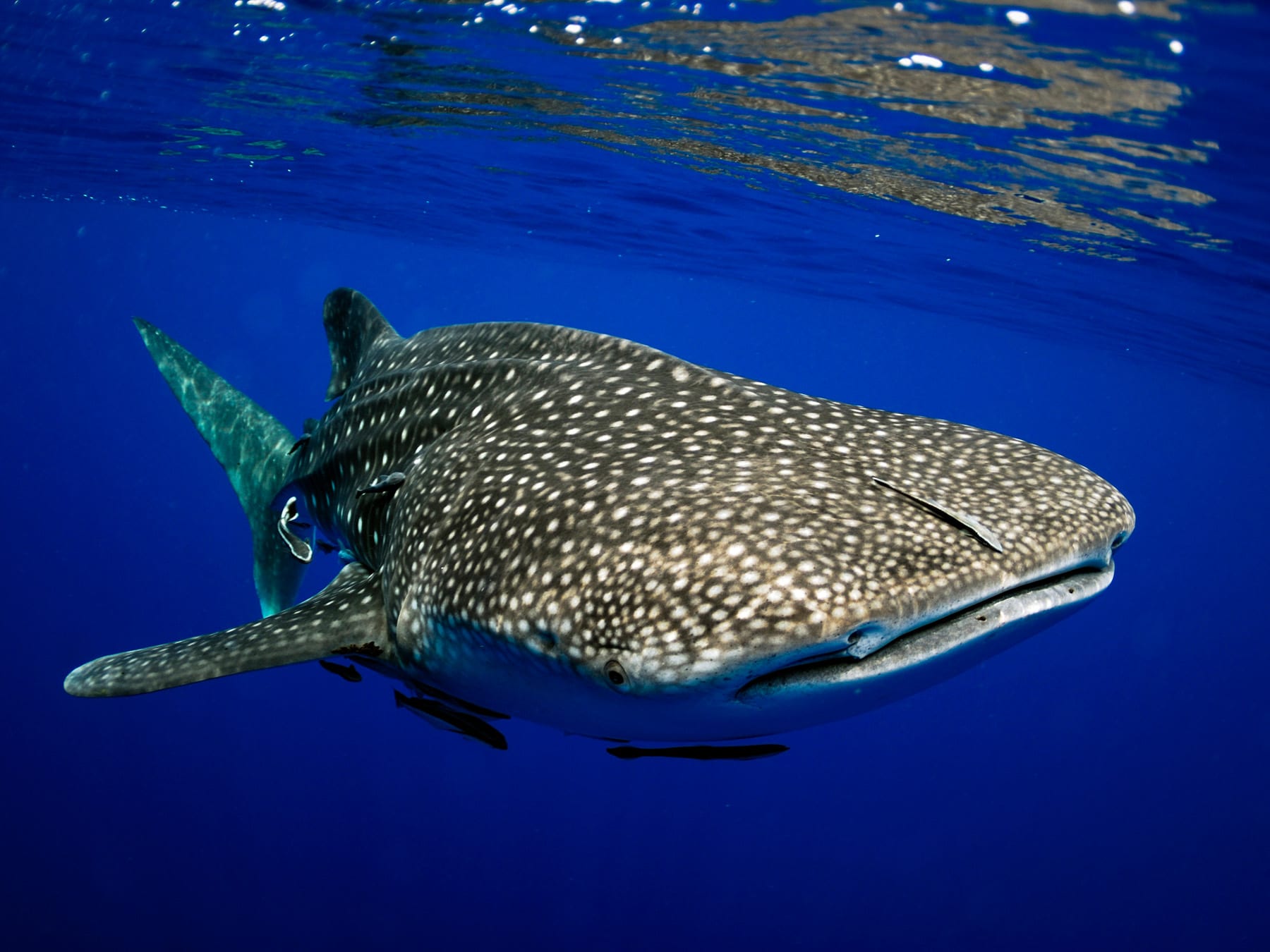
Kenya’s coast is a great location to spot the world’s largest fish between October and March each year. Image by Chainarong, 123rf.com
12) Watamu is a natural haven for endangered sea turtles
Watamu has a marine park that is a breeding ground and a haven for endangered green sea turtles. Turtles lay their eggs on the beaches at Watamu several times a year and can be spotted on the reefs. Other nesting sites can be found on Lamu island and along Mombasa’s beaches.
According to WWF Kenya, it is estimated that only one in 1,000 sea turtle hatchlings will survive to adulthood. Poor, irresponsible fishing practices and plastic pollution are two major threats to sea turtles. In 2017, Kenya banned the use of plastic bags and in 2020, it has become illegal for all single use plastics to enter national parks and reserves (including marine parks). This is a major step in the right direction but sustained action is needed from everyone, to ensure these ancient creatures, which have been around since the time of the dinosaurs are protected. After surviving for more than 100 million years, how sad would it be for them to become extinct now, at the hands of humans?
Local Ocean Conservation, based in Watamu, is one private, non-profit organisation committed to the protection of Kenya’s marine environment.
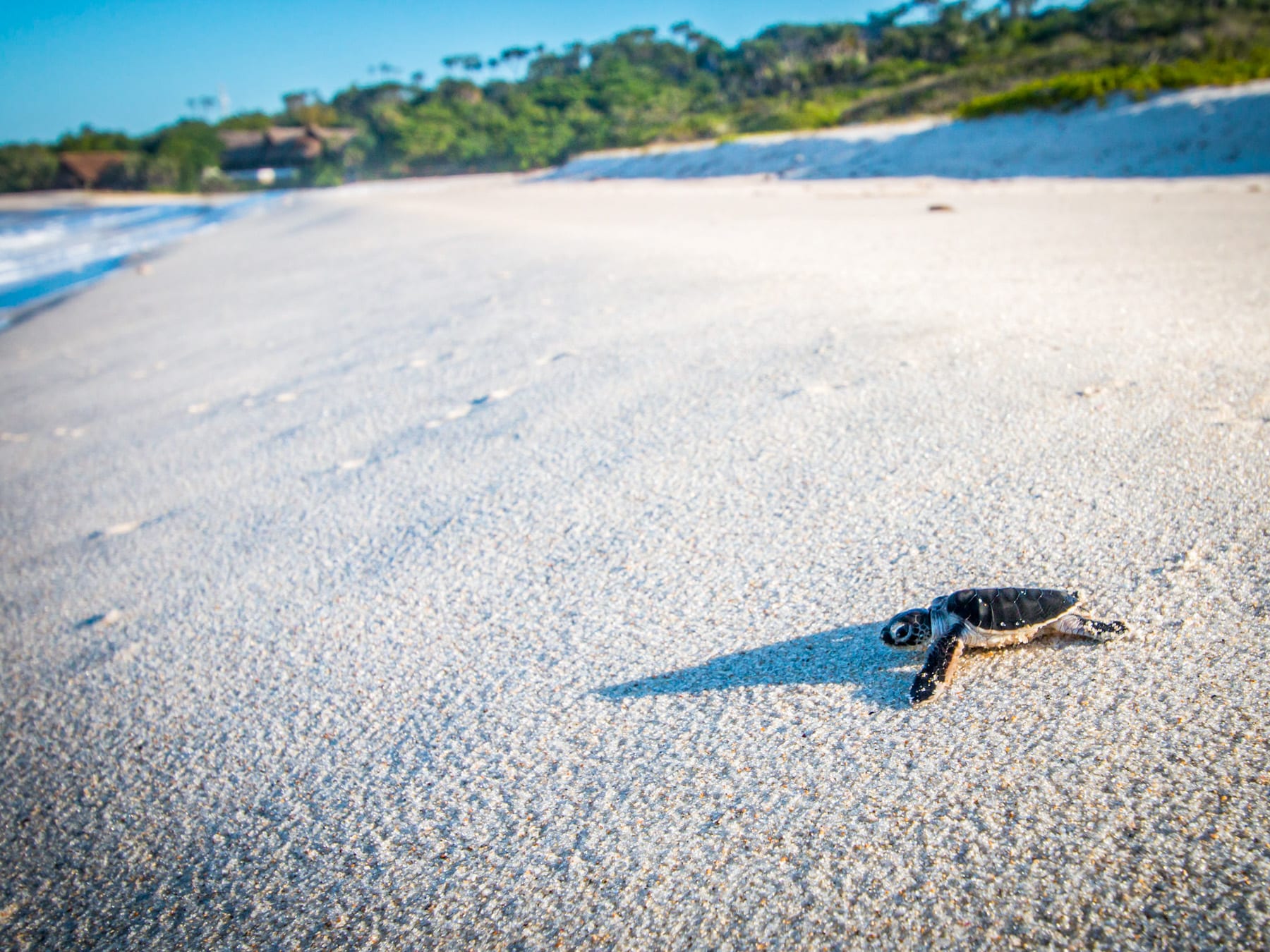
A baby turtle makes its way to the ocean after hatching. Image by Simon Eeman, 123rf.com
Turtle Conservation in Lamu, Kenya. Video by WWF Kenya.
13) Kenya is rich in bird life – there are over 1,000 species!
With around 1,089 different bird species and 600+ in the capital alone, Kenya is one of the best bird watching locations in the world.
Only ten percent of Kenya’s bird species are migratory. The migration of birds to and from Europe and Asia occurs in April and November each year. The Rift Valley is one of the best places in Kenya to see migratory birds.
I don’t know all the different species of bird but I certainly enjoy watching them and taking photos, such as the ones below, which were captured in various areas of Kenya. From Mombasa, the highlands and the trees outside our apartment in Nairobi (when we lived in Kenya).
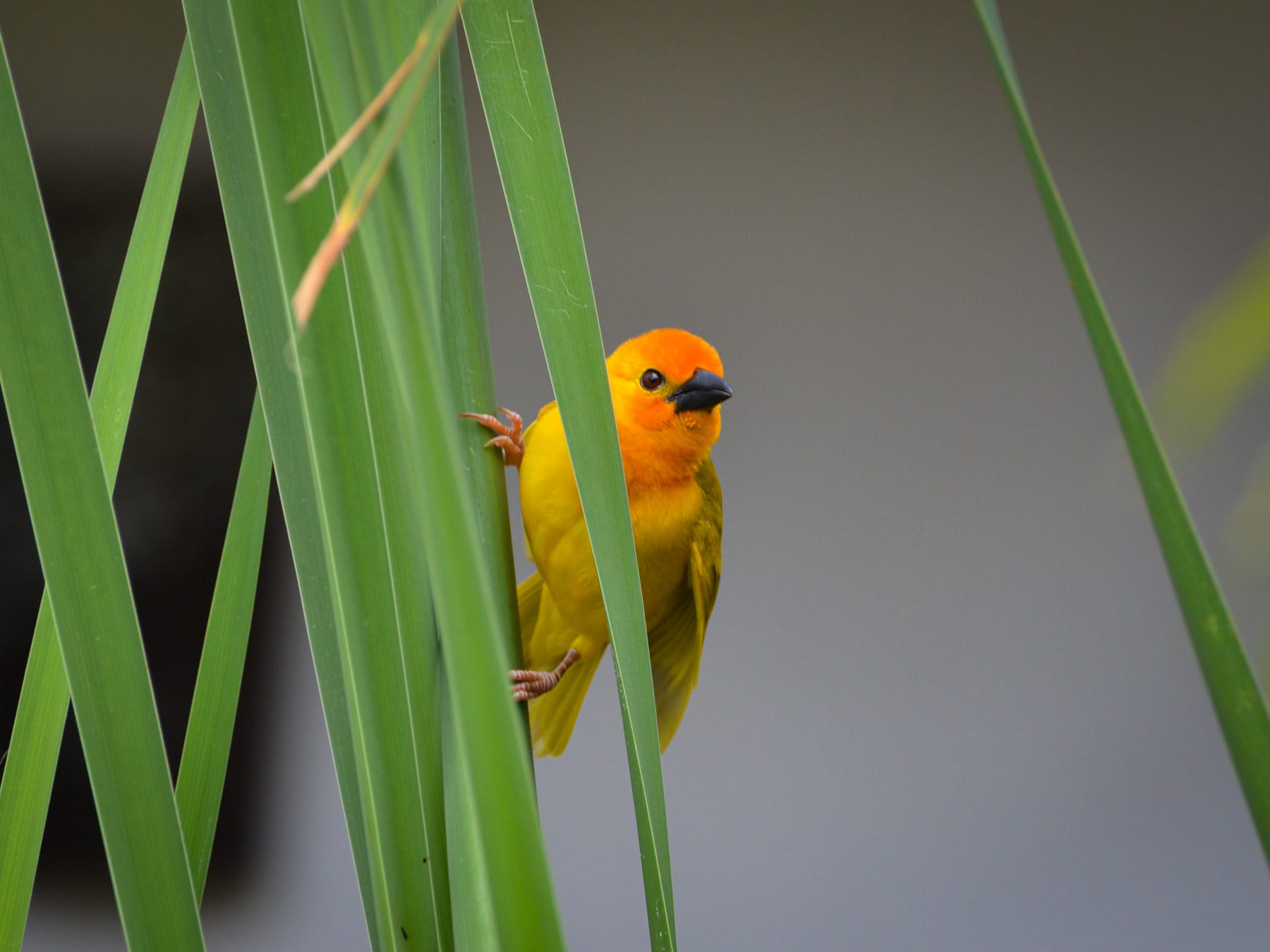
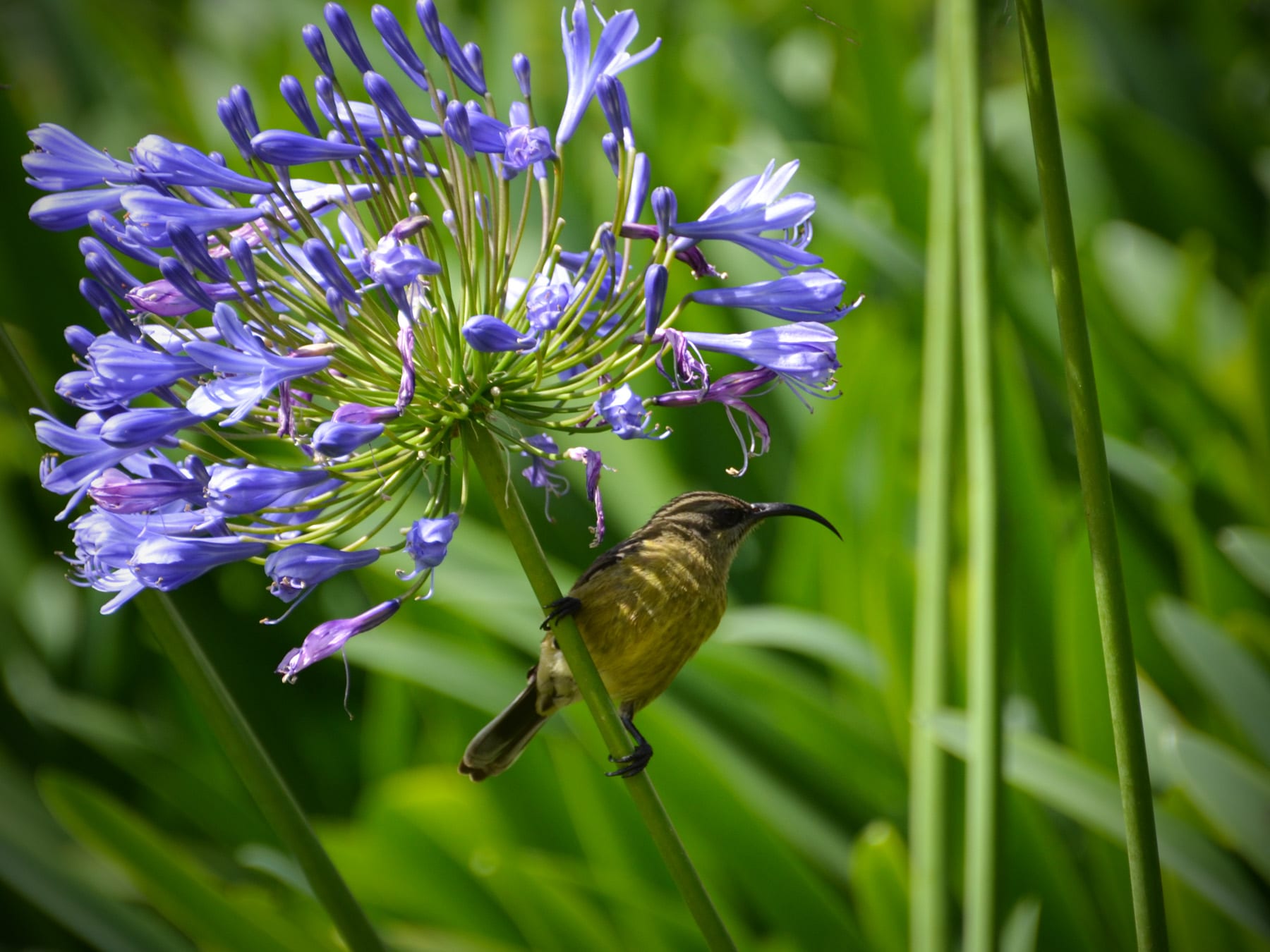
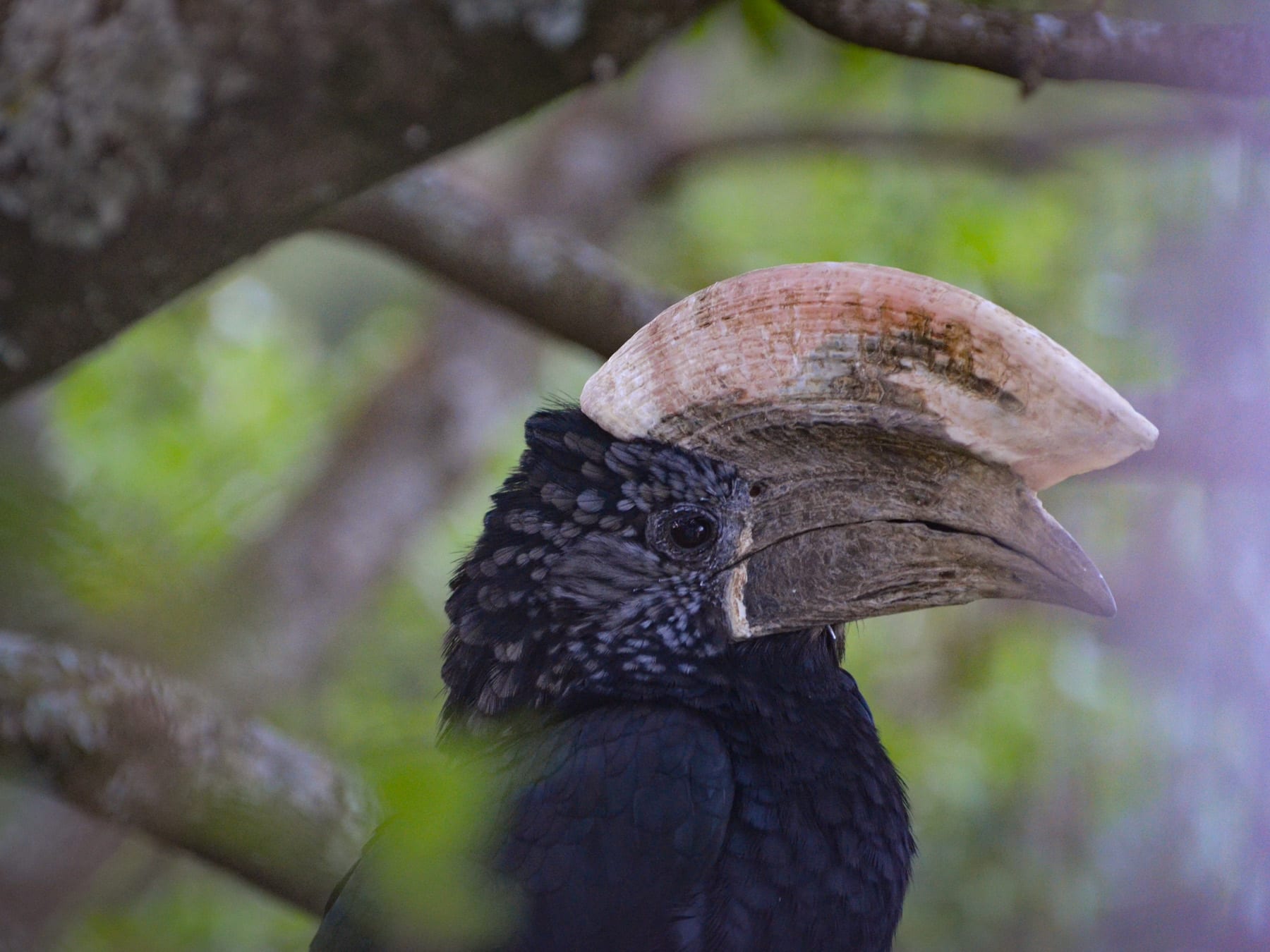
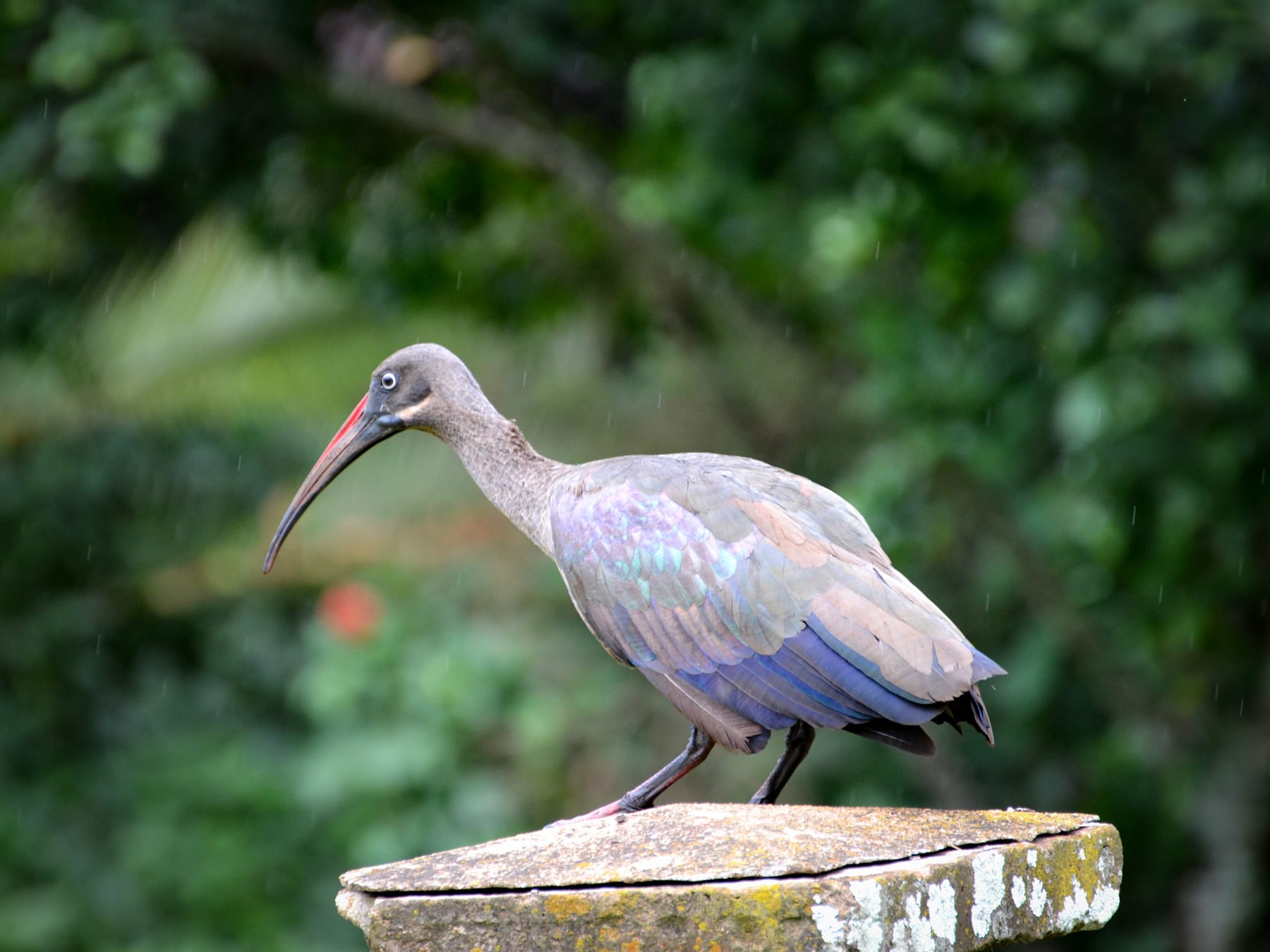
Kenya is home to more than 1,000+ species of birds. Images copyright Ayaan Chitty.
In Summary
I hope you’ve enjoyed reading and learning more about the natural wonders of Kenya. Whilst there’s so many things to celebrate about this magnificent country, something that deeply saddens me, is that much of the native wildlife has become severely threatened or critically endangered. It’s only by pulling together various research for this article, that I’ve started to understand the scale and breadth of the issue. It’s extremely alarming.
On a positive note though, now is the time to take action and counterbalance any further impact. It’s reassuring to learn of the many wildlife protection and conservation efforts that are running across the country.
By reading this post, my hope is that you have been inspired to venture into Kenya and explore all its natural beauty for yourself.
Why not take a look at the other posts in this 4-part mini-series:
Please do let me know your feedback or questions via the comments box below (note: you may need to scroll right to the bottom of the page). I would be very happy to hear from you and will do my best to address any questions you have.
We are also publishing new content regularly, so don’t miss out – you can subscribe using the form below and get notified each time new content is added.
Did you enjoy reading this post?
Why not share it with your friends?
Never miss an update from us!
Sign-up below and we’ll keep you updated of new posts and information about Africa.
